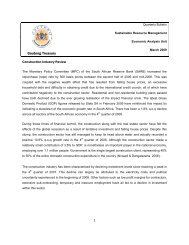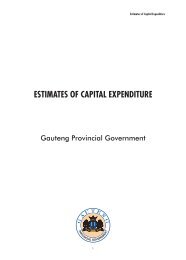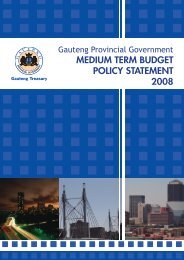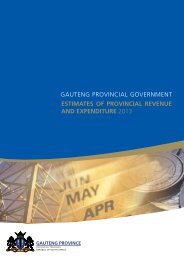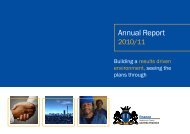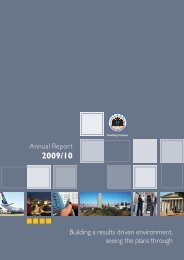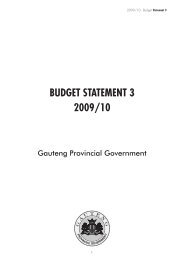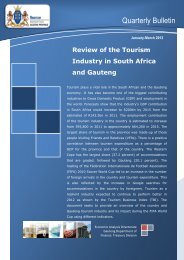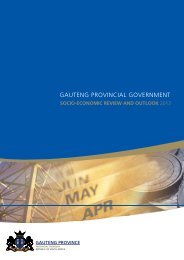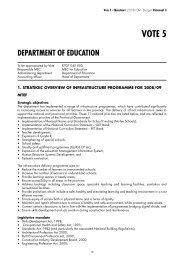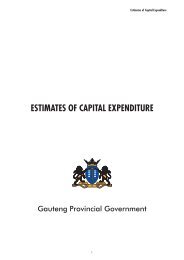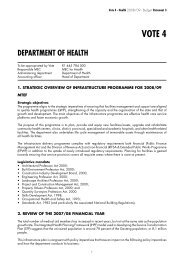ACFI 2011/12.indd - Gauteng Provincial Treasury
ACFI 2011/12.indd - Gauteng Provincial Treasury
ACFI 2011/12.indd - Gauteng Provincial Treasury
You also want an ePaper? Increase the reach of your titles
YUMPU automatically turns print PDFs into web optimized ePapers that Google loves.
GAUTENG PROVINCE PUBLIC ENTITIESStatement of Accounting Policies & Related Mattersfor the year ended 31 March 20121.21 Comparitive FiguresComparative fi gures where necessary have been adjusted to conformto changes in presentation in the current year.1.22 Related PartiesParties are considered to be related if one party has the ability to controlthe other party or exercise a signifi cant infl uence over the other partyin making fi nancial and operating decisions or if the related party entityand other entity are subject to common control.Related parties include:• Key management personnel and close members of the family ofkey management personnel.<strong>Provincial</strong> departments and entities that directly or indirectly havecontrol.Key management is defi ned as being individuals with the authority andresponsibility for planning, directing and controlling the activities of anentity. All individuals from the level of corporate executives up to boardof directors are regarded as key management.Close family members of key management are considered to be thosefamily members who may be expected to infl uence, be infl uenced bykey management individuals or other parties related to an entity.A related party transaction is a transfer of resources, services orobligation between the reporting entity and a related party, regardlessof whether a price is charged. Related party transactions excludetransactions with any other entity that is a related party solely becauseof its economic dependence on the reporting entity or the governmentof which it forms part. Related party transactions are measured andrecognized on terms and conditions are normal for such transactions.1.23 Materiality for the GroupInformation is material if its omission, misstatement, or non-disclosurecould infl uence the decisions of users made on the basis of the fi nancialstatements. Materiality depends on the size of the item or error judgedin the particular circumstances of its omission, misstatement, or nondisclosurein the fi nancial statements. Thus, materiality providesa threshold or cut-off point rather than being a primary qualitativecharacteristic which information must have if it is to be useful.All balances and transactions between entities included in thecombination that are regarded as material will be eliminated. Balancesand transactions that are less than 2% of combined total expenditureare not considered to be material and are therefore not eliminated.Combined Financial Information Annual Report <strong>2011</strong>/12 | <strong>Gauteng</strong> <strong>Provincial</strong> Government63



